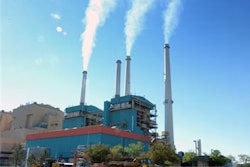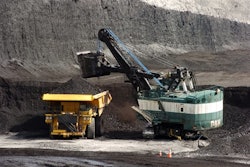This article first ran in Product Design & Development's July/August 2013 issue.
One man’s trash is another man’s … electricity?
Excel Energy’s French Island plant is a combination generating plant and resource recovery facility. By working together, the two facilities generated over 88,500 MWH of electricity in 2012 — enough to power nearly 10,000 homes. Originally built in the 1940s as a coal-fired generating facility, French Island has a long history, and many of its original parts still remain in operation today.
“We change a lot of the equipment and redesign it, but we don’t put in new equipment. This technology works for us,” plant manager Mark Paitl explains. But with a facility that is more than 70 years old, regular maintenance, quality machinery, and updates in technology are vital to keep the plant running.
“Small plants like this would not be in service if they weren’t burning alternative fuels,” Paitl says. To stay in business, French Island converted from coal to oil in 1972, and then to waste wood in the early 1980s. Currently, the plant’s two generating units burn wood waste, railroad ties, and processed municipal solid waste called refuse-derived fuel (RDF).
The Process
Every day, garbage trucks from around La Crosse, WI bring their loads to the facility where it is inspected and processed into RDF. “Everything that comes in is processed into fuel, residue, or metals that are recycled, and then we start over the next day,” says Paitl. The process begins on the tipping floor where the solid waste is dumped and sorted. A front end loader removes oversized items and feeds the remaining waste into a flail mill that “busts everything up.” The flail mill consists of 45 hammers that weigh 35 pounds each, rotating at 800 rpm.
After the hammers have broken down some of the larger content, a magnetic separator removes any ferrous material. “Even after recycling, we are collecting about one ton of aluminum cans per day in the garbage we receive,” Paitl adds.
Materials four inches and smaller are further separated as they pass over a disc screen. These pieces go directly to the fuel loop and the rest are shredded into RDF and stored until they are needed. Blow lines transport the RDF to the boilers where it is burned along with wood received from area vendors. The fluidized bed boilers produce superheated steam at 450-pounds per square inch at 750°F. The steam goes directly to the two steam turbine generators, both capable of producing 15 megawatts of electricity.
The fluidized bed boiler installed at FrenchIsland was the first in the United States to be used for commercial power production.
The Controls
| Waste wood is dumped into a receiving hopper. Since 1987 French Island has utilized more than 600,000 tons of RDF and more than 1 million tons of waste wood and railroad. (PD&D Photo/Melissa Fassbender) |
To keep the plant running smoothly, engineers rely on a system of controls. Before their latest upgrades, the plant was using the Bailey Net 90 control system, which was very centralized. In their process of upgrades to comply with municipal waste combustor regulations, the company saw the opportunity to decentralize the system and add a new control room, according to Dave Hendrickson, the plant superintendent.
French Island upgraded to an Emerson Delta V control system, which is much like a distributor control system, but the hardware is similar to a programmable logic controller. “We also installed junction boxes throughout the plant to shorten up any control runs, and unloaded cable trays that were overflowing in the plant,” Hendrickson adds.
The company was even able to shorten up all of the instrumentation control runs in the process. “We use bus technologies here; field bus for our analog loops and controls. For our upgrades, we went to DeviceNet for all our discreet controls and digital controls,” he adds. “We also use fiber optics for the network connections in the plant, because they are much faster and more reliable.” The plant also has redundant systems in place for the controls that are operating on a Windows platform.
The positive outcomes from the upgrades were mirrored in the environmental impacts. “Upgrading the control systems was also a way to lower our emissions. By adding additional instrumentation to the right systems, the control systems could be configured to do a much better job,” Hendrickson explains. “We drastically reduced our emissions just by better instrumentation and having more information, as well as better predictive tuning.”
After all the upgrades Hendrickson would only change one thing; “If I had to do it over again, I wouldn’t have used the field bus for analog, I would have stayed with standard analog loops. It’s too complex, too expensive. I would have stayed analog, 40 to 20, standard analog.”
The Standard
As Hendrickson realized, newer technology isn’t always the answer, sometimes the standard works better. “We don’t have to go and spend capitol dollars to put in something brand new just because it’s a newer technology. Our emissions are great, it's been profitable for us; and has been working well for La Crosse County,” Paitl adds.
The equipment is still running strong at the French Island Generating Station. Through regular maintenance, and the standard of old technology that was built to last, the plant has proven that they can make it work, and make it work well.
“People say, ‘you must be doing something right if you’re still in business. "That is the key, we’ve learned to make the equipment work without making a lot of capital improvements,” says Paitl.
By burning garbage for energy, the company has also eliminated the need for 5.5 area landfills. Chances are, if you live in La Crosse, that pizza box you threw away yesterday might just be powering your home tomorrow. As the saying goes, one man’s trash is another man's…electricity?























